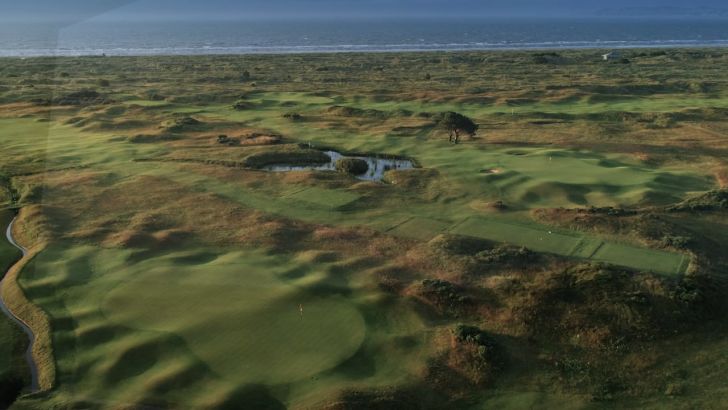The Royal Dublin Golf Club - in the beginning....
Set in the middle of Dublin Bay, one of the Ireland's youngest landforms is home to its' third oldest golf club.
An exquisite video expertly produced by Nick Wall from Air Swing Media.
The Royal Dublin Golf Club is one of Ireland’s oldest golf clubs sharing formative embers and a gene pool with the likes of Royal Portrush, Royal County Down and Royal Belfast as one of the initial standard bearers of golf in Ireland. The club has been located on Bull Island since 1889 and gained its Royal designation from Queen Vicotria in 1891.
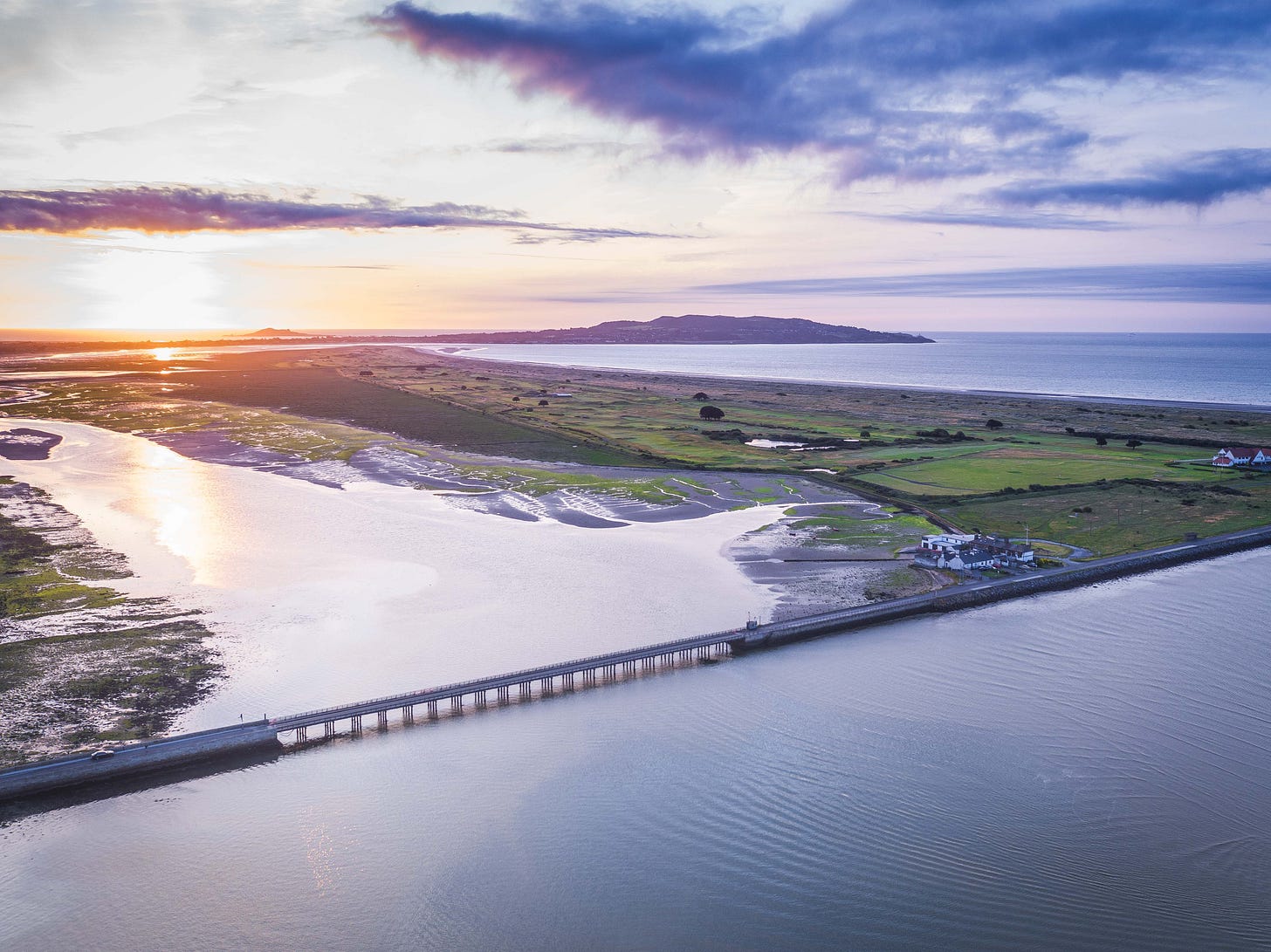
Bull Island is a relatively recent addition to Dublin Bay, the island’s formation is directly linked to the construction of the harbour’s North Quay wall during the 1830’s. Dublin Bay’s shifting sands presented a significant hazard to shipping, upon completion of the North Wall these sandy deposits created the initial foundations for what would later become known as Bull Island. As a result of the relative recency of its formation the site is of a low lying nature with subtle micro undulations and contours evident throughout.
The course, at Dollymount, was initially routed in 1889 by club founder John Lumsden and Tom Gilroy. Subsequent revisions were made by the Managing Secretary, Cecil Barcroft, who according to Bernard Darwin, in his book The Golf Courses of the British Isles was ‘a great disciple of Mr. John Low in the matter of bunkering. He (Barcroft) has saturated his mind in that most charming and instructive of books, Concerning Golf, and then he has gone forth valiantly with his shovel’.
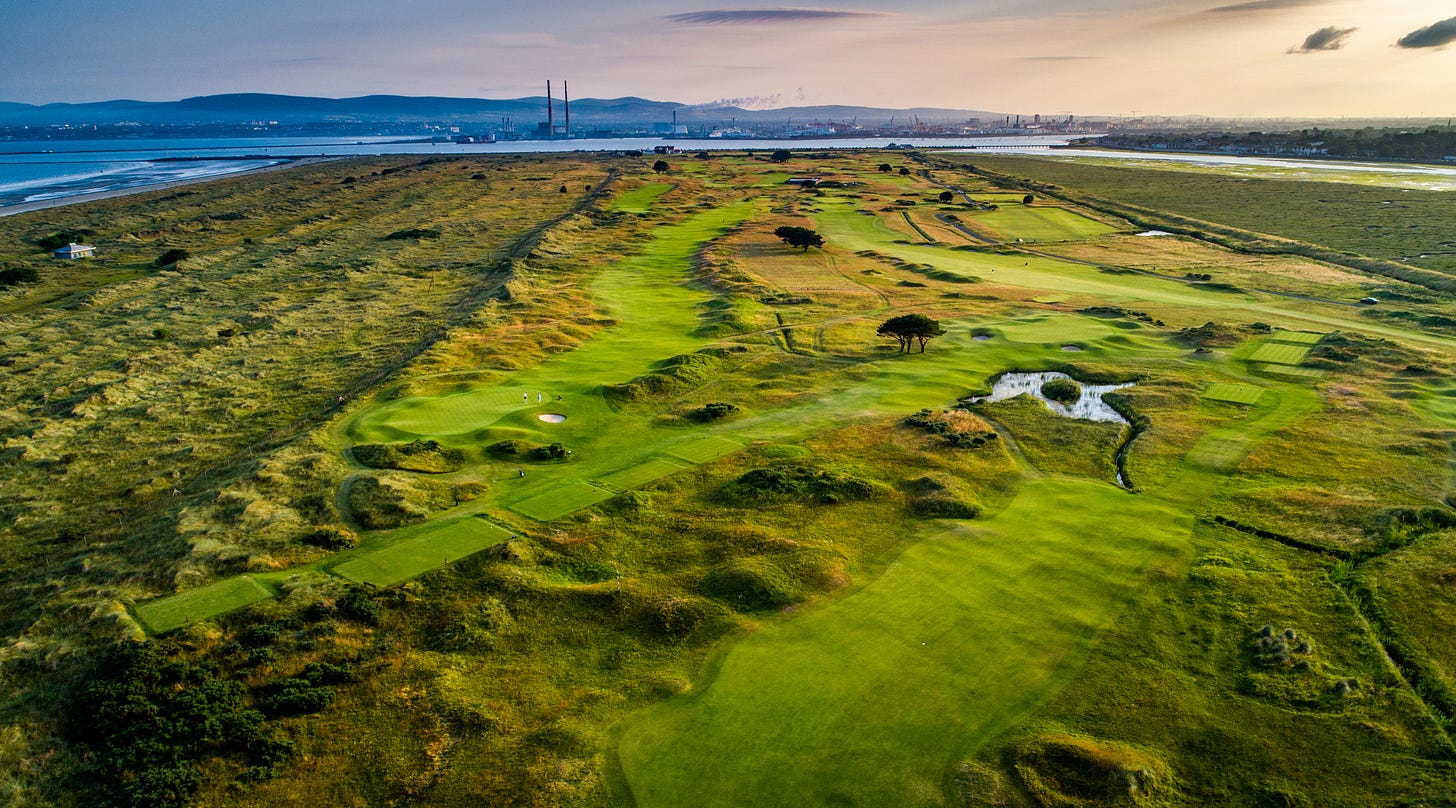
The onset of WW1 would see many club members fight and die for queen and country in locations such as the Somme, Dardanelles (Galipoli), Marne and Vimy Ridge. These locations would echo through time as some of the new holes developed post war would carry battle names in memory of fallen golfers such as Michael Moran who had finished joint third with Harry Vardon in the 1913 Open Championship at Hoylake. Moran was considered one of the very best professional golfers in Ireland at that time, he would bravely head for the front in 1914 and was unfortunately killed at Le Cateau, France in 1918.
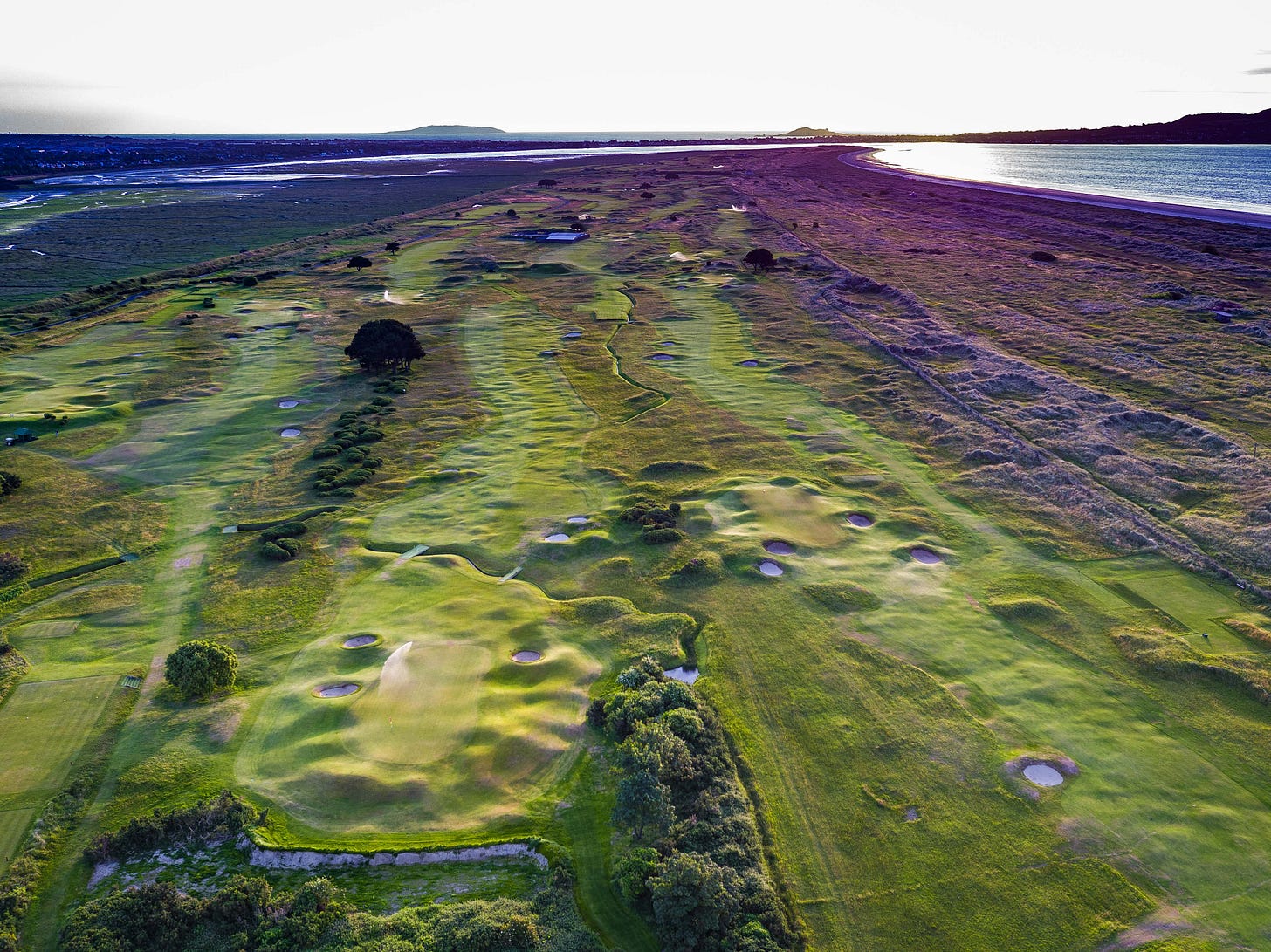
Meanwhile, on the home front the British Army requisitioned the golf course for musketry and shooting practice in 1914 to prepare local recruits for the ongoing war efforts. Many of the internal dunes were obliterated by the army to facilitate mess halls, accommodations etc., large mounds and ramparts were constructed across the course to meet the operational demands of the training school; in fact the remnants of some of these berms and ridges are still evident throughout the course today.
At the end of the war much of the course and clubhouse lay in almost total disrepair and with the assistance of a £10,000.00 remittance from the army, the course was revised under the watchful eye of Harry Shapland Colt, the father of golden age architecture, to modernise and better reflect a more fitting challenge to the rubber cored balls that had been favored since the early 1900’s. The revised Colt design would be opened for play in 1920.
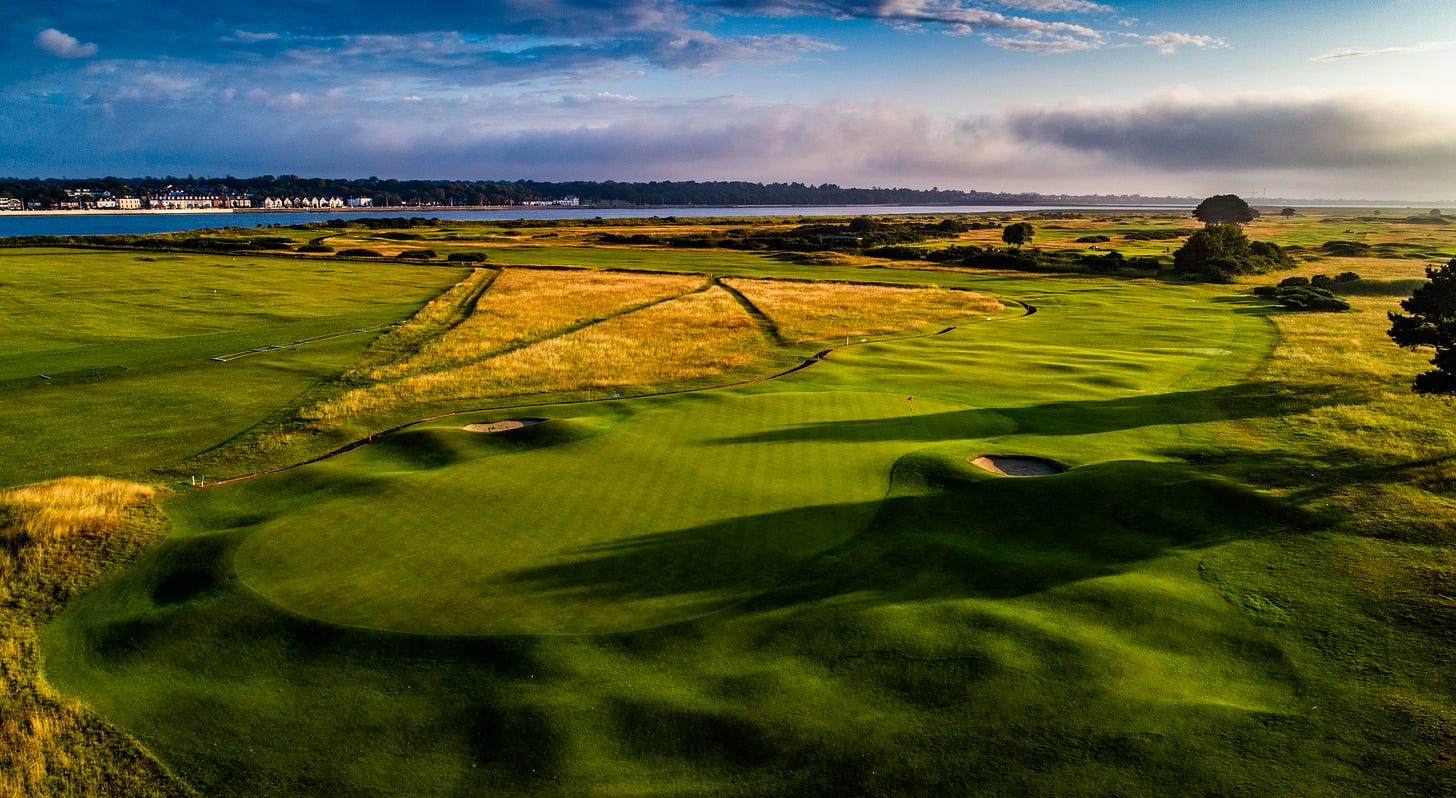
From a course development perspective nothing of material design significance happened from Colt’s 1920’s interventions until Martin Hawtree’s renovation/redesign in the early 2000’s which added additional length (circa 500 yards) to better accommodate the advances in modern technology.
It is interesting to note that at this juncture (1920’s) Colt had begun to place green sites on natural dune ridges. His green construction methodologies included the provision of layers of underlying substrate which assisted in the retention of moisture in greens which did not have the benefit of mechanical irrigation.
Unlike the Dunluce course at Royal Portrush and another Colt masterpiece at Rosses Point, Colt & Co’s preferred construction company (Frank’s Harris) appear not to have been involved at Dollymount. Reconstruction was undertaken by a team of labourers, overseen by the then Superintendent (Charles Davidson) with supervision from Cecil Barcroft (Managing Secretary) and Anthony Babington.
Recent research (late 2024), suggests that significant droughts were experienced in Ireland in subsequent summers throughout the 1920s with the new greens bearing the brunt of a dearth of natural irrigation by means of precipitation.
Unfortunately a catastrophic clubhouse fire in 1943 means that all historical records were irrevocably lost and we are at the mercy of the golfing press to endeavour to ascertain the challenges and specific decisions that were taken throughout this time period.
Whether there was something amiss with the process of construction that Davidson and his team employed, a specific quirk of the site or just bad luck due to the prevailing conditions, any or all of these possibilities may be true, however, given the current absence of any definitive proof, these possible suggestions can only be considered as speculation.
What we do know is that in advance of hosting the Irish Open Championship in 1936, John McAllister, the former superintendent at Portmarnock Golf Club, was engaged from 1935, to reposition up to 5 of the original Colt greens.
Lionel Hewson, writing in the Irish Field in the late 1930’s, refers the existence of 23 greens at Royal Dublin (18 original Colt plus 5 supplementary McAllister options located in lower lying positions).
Prior to the arrival of the first single row irrigation system in the late 1960’s ponds were excavated to facilitate the irrigation of the greens, many of these are still in existence even to this day as relic echoes of a time when modern irrigation systems were a figment of imagination in the environs of North Bull Island.
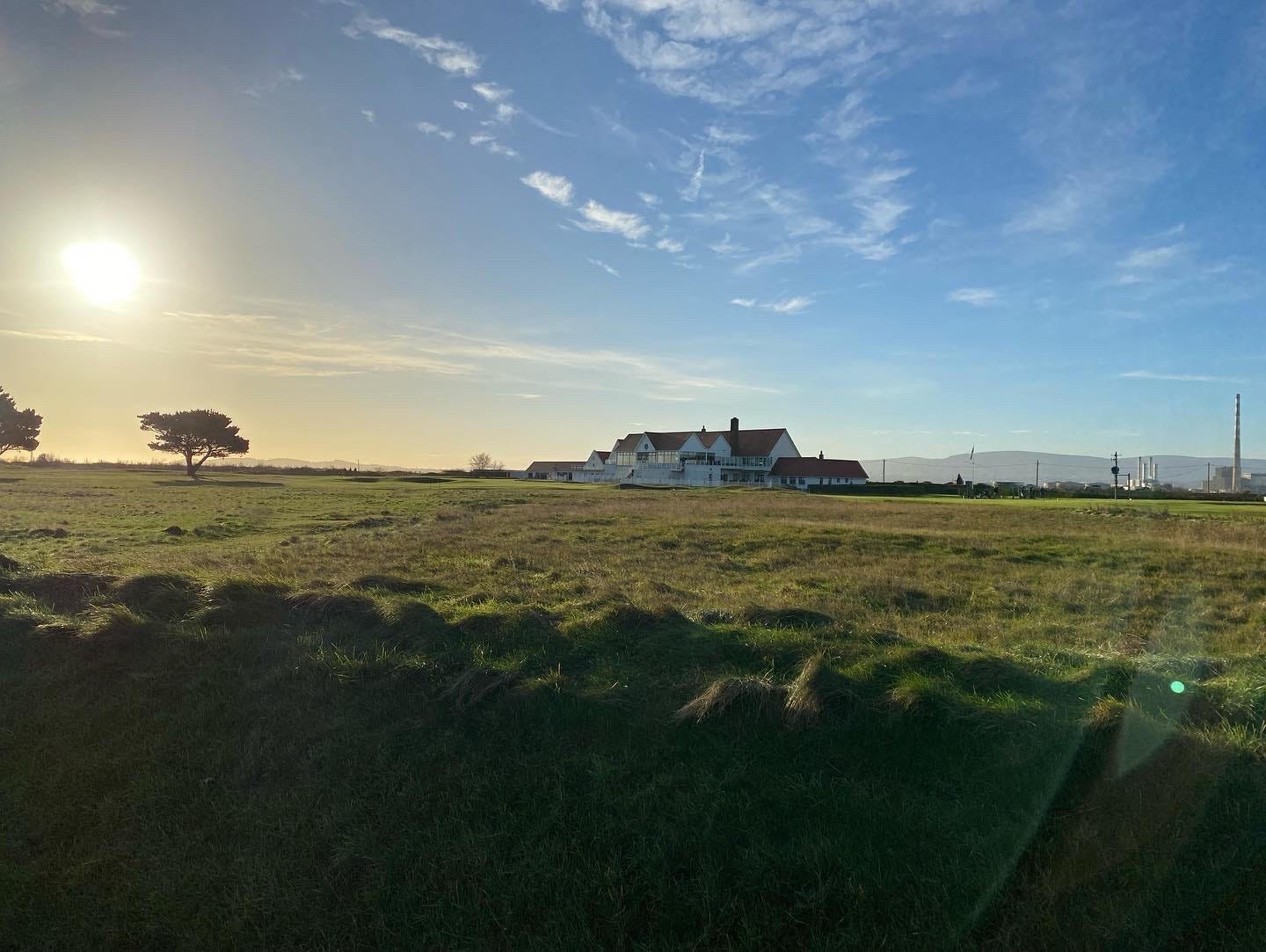
From a course development perspective nothing of material design significance happened from Colt’s 1920’s interventions until Martin Hawtree’s renovation/redesign in the early 2000’s which added additional length (circa 500 yards) to better accommodate the advances in modern technology.
Hawtree retained most of the Colt playing corridors, adding 2 new holes (6 & 7) and significant additional bunkering and mounding. He also elevated many of the putting surfaces, in an effort to escape from the grasp of the sites high water table.
Royal Dublin is routed in a predominantly traditional out and back fashion, with the narrower front nine generally playing with the wind and the wider return nine playing into whatever zephyr may linger on the day in question.
If scoring is your thing, you will need to try to post your score on the way out and hang on after you make the turn as you mark your run back towards the looming city, port and Dublin mountains beyond.
Undoubtedly, Royal Dublin represents a proper, low-lying links test with the main routing counterpointed by contra-flow holes at 4, 7, 9, 15 and 18. These holes provide just enough directional relief to assuage any sense of repetition.
The relatively recent appointment of Clayton, De Vries & Pont as consulting architects has to seen a return to more Colt-style strategic design principles to usher the club in a new direction where words like interest and fun replace an equation where hard=good.
I am probably being too harsh a critic of Hawtree’s work; however, I don’t suppose he will ever be considered equal to H.S. Colt. It is arguably questionable how we ever departed from the principle of strategic interest and fun that Colt undoubtedly espoused.
A new course superintendent is also eager to develop the ground game as a more viable option. This appointment and a hunger and thirst to pull the right levers should see this grand old dame awake from it’s slumber to present true links conditions, dictated by the weather, with more than a modicum of bouncey bounce….now we’re talking!
This piece of sand based flotsam in the middle of Dublin Bay is where golf began for me, it is a special and unique place for many reasons .... come across the wooden bridge to visit us.... you’ll keep coming back.
Thanks for reading the piece, if you enjoyed it, please subscribe, like and retweet.
Please have a listen to episode 1 of our podcast and tune in over the coming weeks as we share what will be stories, experiences and quite a few laughs….please subscribe, share and tell your friends of our journey….many thanks for your continued interest and support….. happy golfing!

